How to Accommodate Invisible Disabilities in the Workplace

How to Accommodate Invisible Disabilities in the Workplace
When considering employee supports and Equity Diversity and Inclusion (EDI) strategies, many businesses focus on the diversity part but can neglect many other important aspects of employee supports including accessibility, accommodations, and awareness about disabilities. An article on Harvard business Review mentions studies that of those that do have an EDI policy (approx. 40% of Canadian Businesses) only 4% consider people with disabilities in those initiatives.
To properly support our workforce, we need to address all intersectional barriers a person may face a work. A pervious blog post here, explains intersectionality and the importance of understanding the complex, cumulative way in which the effects of multiple forms of discrimination (such as ablism, racism, sexism, classism, etc.) combine, overlap, or intersect especially in the experiences of marginalized individuals or groups. Leaving those with a disability out of EDI means inequitable workplaces for approximately 22% of Canadians.
When people consider those with a disability, they usually see/think of a person with a wheelchair or a white cane alone as the symbol for disability, but what about those disabilities we don’t see? Things such as hearing loss, chronic illness, mental health conditions, diabetes, etc. are all considered invisible disabilities. In Canada, disabilities related to pain, flexibility, mobility, and mental health were the most common types of disabilities. This means the most common disabilities are invisible, so how can you learn to support those people in the workplace?
Use the Individual Approach to Accommodations
Each of our life experiences impacts how we interact with the world, including how we interact with barriers and disability. Using a one size fits all approach on supporting individuals, especially with accommodations, will do a disservice to both the business and the employee. Standard best practice is a great foundation, but we need to consider individual needs when looking at accommodations and adjustments at work. Those with a similar disability may use different accommodations. For example, someone with migraines may use low stimulation, compression, ice packs, etc. but not all these treatments work for everyone. Providing accommodations that are ineffective won’t support removal of barriers but may create more. Each person would have their own understanding on their needs or barriers. The goal is to provide the space and support on how to help your team member succeed in their role the best way for them.
Learn how to Inquire
As an employer, you have a legal obligation to adjust policies and practices so employees can participate equitably in the workplace. In some parts of Canada there is also the duty to inquire, which can also be seen as good practice. If an employee is showing signs of distress, acting different, or looks to be struggling, you have a duty to inquire about what’s impacting on them at work.
Inquiring about employee needs also establishes trust and rapport among employees. It can be just as simple as “is there anything I can do to support your success?” or “I’ve noticed you seem to be struggling, which tasks are giving you a hard time?” Allowing people the space to express their needs without having to disclose any information they don’t feel comfortable sharing while also encouraging a culture of communication, transparency, and retention.
Rely on Flexibility and Quick Pivots
As we’ve seen through the ever-changing work landscape over the past few years. Adaptability can make or break any business or organization. Being able to make quick pivots and changes based on the needs of the business is essential to success. The same is said of accommodations and adjustments in the workplace. Being able to provide quick effective solutions relies on the ability of the business and their approach, including how they react to emerging needs for both their employees and business. For example, an employee may disclose they have dyslexia and they’re struggling with company software because it doesn’t have spellcheck. An effective accommodation can mean the employee writes their work in Microsoft Word and imports it afterwards, supporting more effective and efficient performance.
Have Inclusive and Accessible Policies and Processes
To hire and retain diverse talent, including those with a disability, you need to have proper supports, policies, processes, and practices in place to support an equity at work. Putting an inclusivity statement to attract diverse talent will ultimately fail and have backlash if not supported through workplace policies and practices. An accommodation policy must be accessible to everyone for it to be accessible. An accessible policy is not inclusive if it is not accessible, and an inclusive policy is not inclusive if it is not accessible, one doesn’t exist without the other.
Build an Inclusive Culture of Understanding
Building workplace culture takes time, understanding, knowledge and consistency but ultimately matching the values of your business with workplace inclusion best practices. As mentioned above taking the individual approach and having supportive and accessible policies, processes and practices are essential pillars of building that inclusive culture. In addition to these we need to bring in a culture of knowledge, training is essential in learning and growing together as a team. Building culture means incorporating your expectations and standards of behaviour at work in every process and practice. This could be in forms of feedback, one to one meetings, team building or meeting environments. Building opportunities for expression and understanding will support cultivating a culture of knowledge and understanding.
Conclusion
Supporting and accommodating people with disabilities in the workplace is essential for a sustainable workforce, including those with disabilities and needs we cannot see. Starting from a place of accessibility with quick pivots and opportunities for employee disclosure is a great foundation for success. Using the individual approach to workplace accommodations and understanding the benefits of inquiring about employee needs will encourage effective accommodations and communication around accessibility.
For pricing, booking information, or to discuss custom training and consulting services for your organization, please contact us for more information.
Meghan Murray
Business Consultant
Join Our Newsletter
Join the INNoVA family! The best way to keep in touch and be informed on our hiring process.



